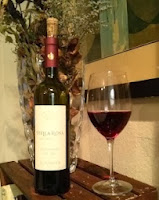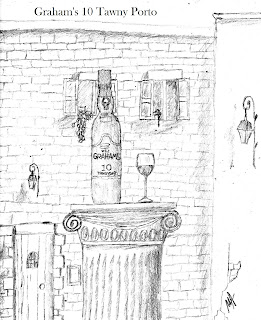The song is entitled "Sparkling Sunrise". Composed by Dr. Murad Abel
 |
| Picture Stella Rosa 1917 |
Rose (Rosa) wine is one of the earliest forms of wine in which grape skins are left in contact with the juice long enough to give it color and then are removed before the fermentation process. The far majority of ancient wines were made in this simple method making ancient wine very different than that of today. At present the majority of wines are hard full red wines. After WWII the Portuguese began to market sparkling Rosa wines to the U.S. and Europe.
Rosa wines are much lighter than their red wine cousins. They are often served in spring and summer while full red wines are served in fall and winter. Most of the time they are served chilled that makes them refreshing in warmer days. As a light type of sweet red wine they can handle both steak and seafood appropriately. It also works well with cheese and spicy foods. Any wine enthusiast should have a bottle or two in stock.
On their website you will find a number of interesting varieties, recipes, and options. The wine originally started in a small town of Italy and came to the U.S. a few years ago. Since that time it has grown in interest and fame. Americans were more used to the hardy red wines but once they got the taste of sparkling red blends it was an instant sensation. You can find this at many different events as a specialty.
If you desire a more complete picture of the wine think of a high quality wine cooler. It is sweet, light, and slightly colored. Rosa wines have the same sort of tastes with both sparking and non-sparkling varieties. The color can range from an orange red to almost full maroon color. The difference being which grapes and berries were used.
Review:
Aroma: High pitched fruit.
Pour: Sparkling with oxidization around glass. Continues to fizzle for 30 seconds after pour.
Taste: Extremely bright, sweet, and punch like. Grape, strawberry, and other red berries.
Contour: Light and smooth.
Color: Light pink red.
Wine Tears: Little to no legs indicating a lower alcohol content.
Alcohol: 5.5% versus 13.7% for red wines.
Website: http://stellarosawines.com/
